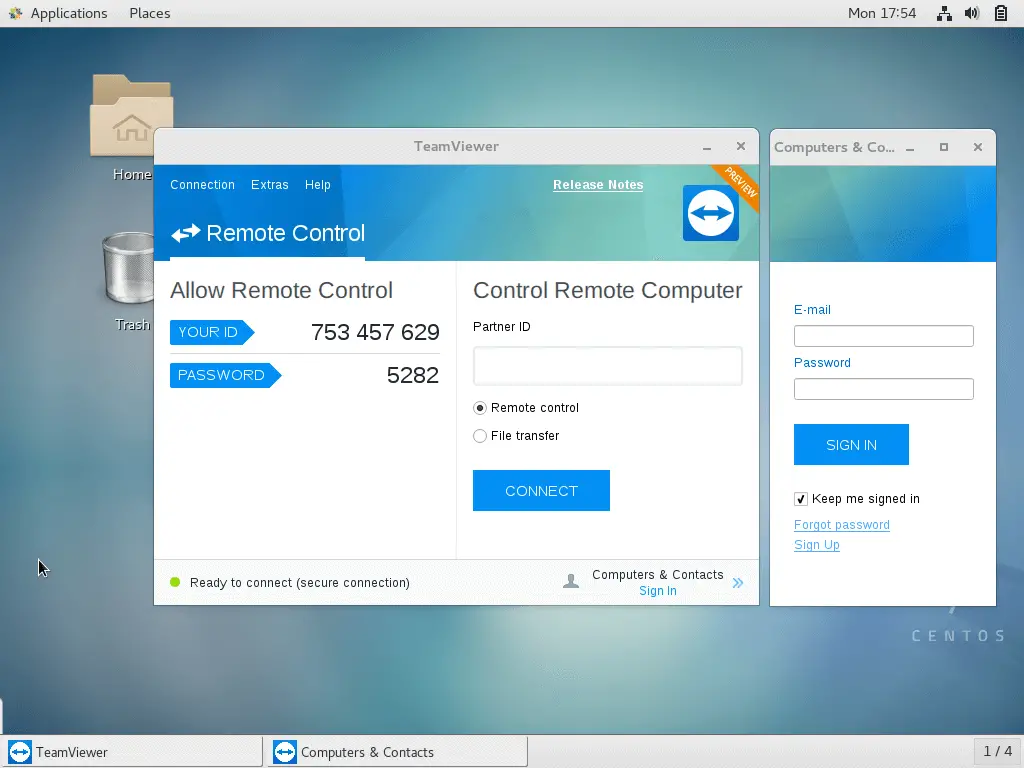How To Install Notepad In Centos 7
Installing GNOME-Desktop:. Install GNOME Desktop Environment on here. # yum -y groups install 'GNOME Desktop'.

Input a command like below after finishing installation: # startx. GNOME Desktop Environment will start.

For first booting, initial setup runs and you have to configure it for first time. Select System language first. Select your keyboard type. Add online accounts if you'd like to.
Finally click 'Start using CentOS Linux'. GNOME Desktop Environments starts like follows. How to use GNOME Shell? The default GNOME Desktop of CentOS 7 starts with classic mode but if you'd like to use GNOME Shell, set like follows: Option A: If you start GNOME with startx, set like follows. # echo 'exec gnome-session' /.xinitrc # startx Option B: set the system graphical login and reboot the system.
After system starts. Click the button which is located next to the 'Sign In' button. Select 'GNOME' on the list. (The default is GNOME Classic). Click 'Sign In' and log in with GNOME Shell. GNOME shell starts like follows: 2. Installing KDE-Desktop:.
Notepadqq Features. Install Notepadqq in Ubuntu/Mint. Add the following PPA to install Notepadqq in Ubuntu and its derivatives such as Mint, elementary OS, etc., Its based on QT, so you have to install qt5. Alternate Repository for RPM based systems Fedora, CentOS, etc. CentOS is a free version of the Red Hat Enterprise Linux operating system. It is built from the same source code as Red Hat and is designed to be used in a business environment. Install NotePadqq. Execute the following command to install notepadqq on CentOS. Run the Application. Now, notepadqq is installed on our system, we can access it by just typing notepadqq on the terminal. This will open the Application as shown below. Hence, we have installed and get started with notepadqq on CentOS.

Install KDE Desktop Environment on here. # yum -y groups install 'KDE Plasma Workspaces'.
Input a command like below after finishing installation: # echo 'exec startkde' /.xinitrc # startx. KDE Desktop Environment starts like follows: 3. Installing Cinnamon Desktop Environment:.
Install Cinnamon Desktop Environment on here. First Add the EPEL Repository (EPEL Repository which is provided from Fedora project.). How to add EPEL Repository? Rather than make use of the hacking of a startx command into a.xinitrc file, it's probably better to tell Systemd that you want to boot into a graphical GUI vs. The terminal. To accomplish this simply do the following: $ sudo yum groupinstall 'GNOME Desktop' $ ln -sf /lib/systemd/system/runlevel5.target /etc/systemd/system/default.target Then simply reboot. The last bit will associate the runlevel 5 target as your default with respect to Systemd.
Doing it with Systemd You can also use Systemd to accomplish this. This is arguably the better method since you're managing the state of the system directly through Systemd and its CLIs. You can see what your current default target is: $ sudo systemctl get-default multi-user.target And then change it to graphical: $ sudo systemctl set-default graphical.target Targets In Systemd the targets runlevel5.target and graphical.target are identical. So too are runlevel2.target and multi-user.target. Runlevel Target Units Description 0 runlevel0.target, poweroff.target Shut down and power off the system. 1 runlevel1.target, rescue.target Set up a rescue shell. 2 runlevel2.target, multi-user.target Set up a non-graphical multi-user system.
Mini vci j2534 driver windows 10. Both will appear with yellow icon (usually under ”Other”), indicating that Windows failed to install drivers for them. Plug the into USB 3. Open the Device Manager and locate two failing devices in the list. Now, right click each failing device, select Install Driver, then ”Browse my Computer” and locate to “C: Program Files (x86) XHorse Electronics MVCI Driver for TOYOTA TIS” (enable the ”include subfolders” flag).
How To Install Notepad In Centos 7 1
3 runlevel3.target, multi-user.target Set up a non-graphical multi-user system. 4 runlevel4.target, multi-user.target Set up a non-graphical multi-user system. 5 runlevel5.target, graphical.target Set up a graphical multi-user system. 6 runlevel6.target, reboot.target Shut down and reboot the system. References.